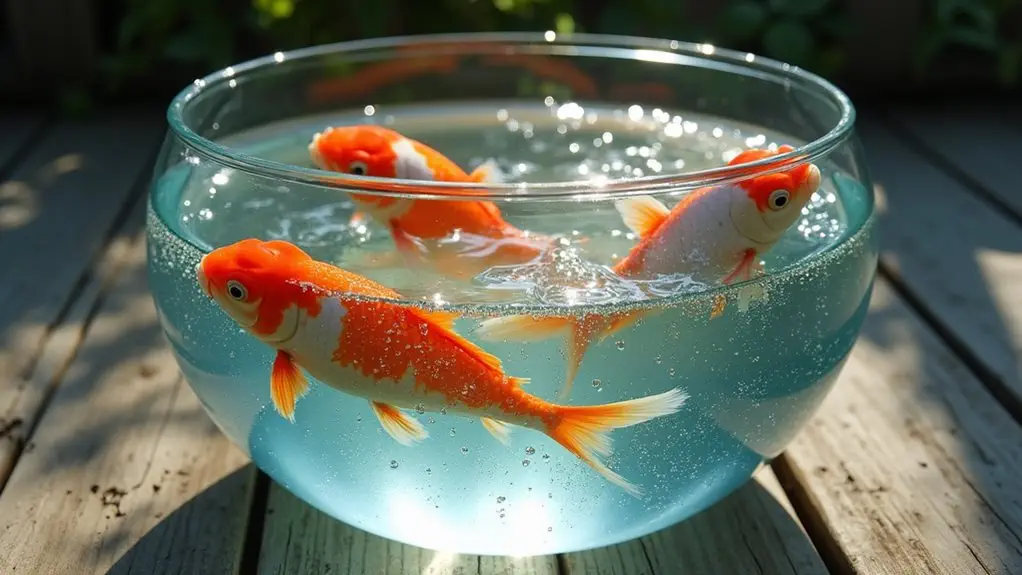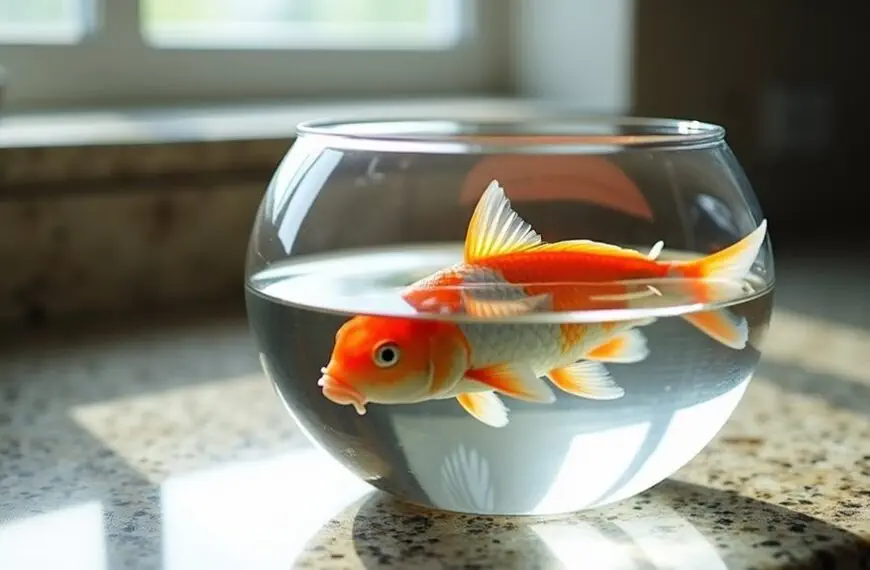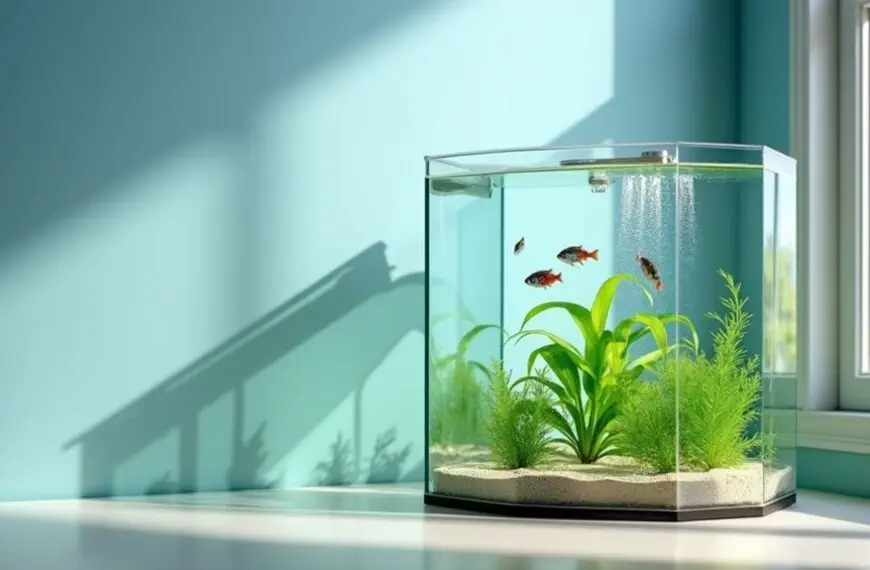You can safely keep fish in a bucket for short periods, but you'll need to follow some important guidelines. For quick moves under 30 minutes, a clean food-grade bucket with temperature-matched water will work fine. Longer stays (30 minutes to 2 hours) require careful monitoring of oxygen levels and water quality, while anything beyond 2 hours needs air stones or pure oxygen. Keep the bucket in a shaded spot, avoid overcrowding, and watch for signs of stress like gasping or unusual behavior. The right bucket size, proper water conditions, and careful timing make all the difference between a smooth shift and a risky situation.
Contents
- 1 Understanding Fish in Buckets
- 2 Essential Water Quality Requirements
- 3 Time and Space Considerations
- 4 Bucket Selection and Preparation
- 5 Aeration and Temperature Control
- 6 Fish Species That Handle Buckets
- 7 Emergency Care and Monitoring
- 8 Transport Safety Guidelines
- 9 Long Term Bucket Solutions
- 10 Frequently Asked Questions
- 10.1 Can I Use a Plastic Bucket That Previously Contained Cleaning Chemicals?
- 10.2 Will Adding Aquarium Plants to the Bucket Help Fish Survive Longer?
- 10.3 How Many Times Should I Change Bucket Water During a Power Outage?
- 10.4 Can I Stack Buckets With Fish During Transport to Save Space?
- 10.5 Should I Feed Fish While They're Temporarily Housed in Buckets?
- 11 Final Thoughts
Understanding Fish in Buckets
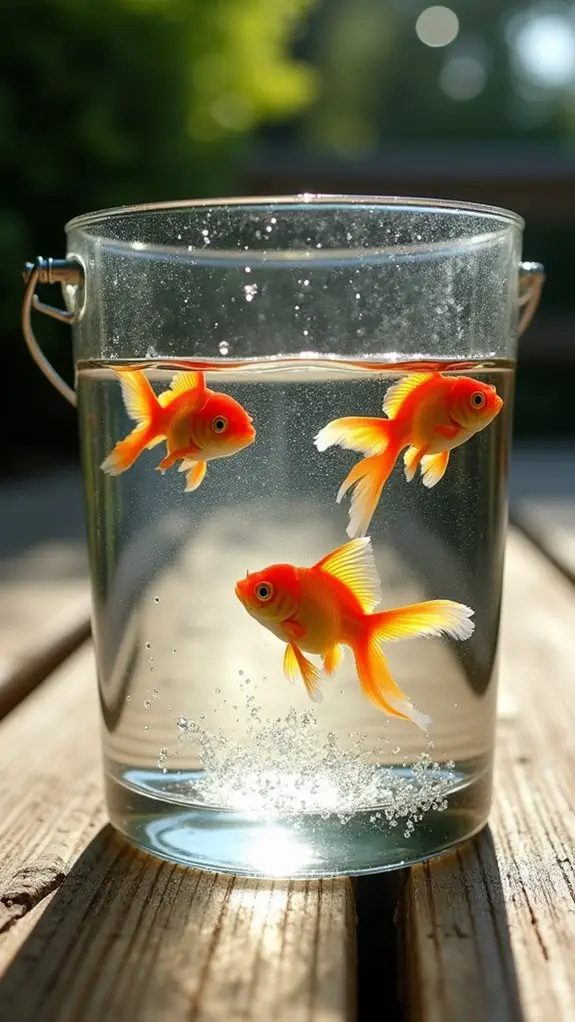
Anyone can transport fish in a bucket, but doing it properly requires understanding the key safety considerations. When you're planning to move fish, you'll need to think carefully about bucket dimensions and how they'll affect your finned friends. A cramped space can lead to unnecessary fish stress, so it's vital to choose a container that gives them enough room to move comfortably. Regular water temperature checks are essential since large swings can cause significant stress to fish. Maintaining water quality is also crucial during transportation to prevent toxic buildup from waste.
You'll want to remember that fish aren't just floating around aimlessly in there – they're actually registering their weight through water displacement, even without touching the bucket itself. While you don't need to be a physics expert, it's helpful to understand that the water supports some of their weight, making them appear lighter than they actually are. Contact with sides of the bucket won't affect the overall weight measurement. Think of it as nature's way of giving fish a break!
When it comes to keeping your fish healthy during transport, you'll need to monitor them closely and make sure they've enough oxygen. It's like being a fish babysitter – you'll want to keep the water clean and safe, making quick changes when necessary to maintain proper conditions.
Essential Water Quality Requirements
When you're keeping fish in a bucket, you'll need to pay close attention to oxygen levels and pH balance, which are just as critical as they'd be in an aquarium. Maintaining a stable pH range for freshwater fish is essential to prevent stress and health complications. You can monitor pH using simple test strips from your local pet store, while adding an air stone or battery-operated bubbler will help maintain healthy oxygen levels. Regular monitoring is essential since contaminants can leach into the water from non-food-grade containers. Just as speech communities adapt their communication patterns, fish adapt to their water conditions but require consistent parameters.
To keep the water temperature stable, you'll want to place the bucket in a shaded area away from direct sunlight and possibly wrap it with a towel or blanket for insulation. Consistent temperatures, ideally between 76°F to 82°F, will support fish health in your temporary setup.
Oxygen and Ph Levels
Understanding oxygen and pH levels is essential before placing fish in a bucket. Your fish need proper oxygen saturation to survive, with warm-water fish requiring at least 5 ppm and cold-water fish needing 4 ppm or higher.
Maintaining proper water quality requires regular testing protocols to ensure safe conditions for your fish. Regular monitoring with multiparameter probes can provide precise measurements of multiple water quality parameters simultaneously. If you notice your fish gasping at the surface or huddling near water inflows, they're telling you they need more oxygen – and fast! Additionally, regular water changes can help improve oxygen levels in the bucket environment.
The pH stability of your bucket water is just as significant as oxygen levels. You'll want to maintain a pH between 6.8 and 7.0 for ideal conditions.
Think of pH like your fish's comfort zone – when it's too high or too low, they'll become stressed, just like you'd feel uncomfortable in a room that's too hot or cold. If your pH drops below 5 or climbs above 8, you're in the danger zone.
Don't worry, though – you can monitor these levels using simple test kits, and if you need to make adjustments, remember to do it slowly.
Adding air stones or adjusting your pump size can help with oxygen levels, while careful pH management will keep your finned friends swimming happily in their temporary bucket home.
Temperature Control Methods
Maintaining proper water temperature stands as one of the most critical aspects of keeping fish in a bucket. Your fish need stable temperatures between 6°C and 26°C, and sudden changes can stress them out or even prove fatal. That's why effective temperature regulation is essential when using temporary bucket housing.
You've got several cooling techniques at your disposal to keep your finned friends comfortable. If you're dealing with warm weather, try placing the bucket in a shaded area or using a simple shade cloth to block direct sunlight. Using polycarbonate buckets helps maintain temperature stability better than glass containers. Warm water contains less dissolved oxygen, which can increase the risk of fish suffocation and can lead to deteriorating fish health if not managed.
For more precise control, you can create a water bath by placing your fish bucket inside a larger container filled with temperature-controlled water. It's like giving your fish their own climate-controlled swimming pool!
Don't forget to monitor the water temperature regularly – a simple thermometer will do the trick. If you need emergency cooling, you can float sealed ice packs in the bucket, but remember to add them gradually to avoid shocking your fish.
You can also insulate the bucket with foam boards or reflective materials to maintain more stable temperatures throughout the day.
Time and Space Considerations

When you're considering keeping fish in a bucket, time limits are your most essential factor – large fish can only stay for a day or two, while smaller species might manage a bit longer. It's important to monitor the nitrate levels in the water, as high levels can quickly become toxic to your fish. You'll need to match the bucket's size to your fish's needs, giving them enough room to swim comfortably without feeling cramped or stressed. Using a bucket with 285% more surface area provides significantly better oxygen absorption for your fish. Adding floating live plants to your bucket setup can help create a more comfortable environment by providing hiding spots and improving water quality.
Duration Limits Matter Most
Time limits make or break your success when keeping fish in buckets. When you're dealing with duration limits, you'll need to carefully consider how long your fish will be contained to avoid unnecessary fish stress.
For quick moves under 30 minutes, you're generally in the safe zone, but anything longer requires more attention and care.
If you're planning to keep fish in a bucket for 30 minutes to 2 hours, you'll need to step up your game. The water quality becomes trickier to maintain, and your finned friends will need extra attention to stay healthy. Regular monitoring of water parameters is crucial to ensure their health during this time.
Think of it like being stuck in a tiny elevator – the longer you're there, the more uncomfortable it gets!
Beyond 2 hours, you're entering the danger zone. You'll need serious equipment like bubblers and pure oxygen, plus you'll have to keep a close eye on water conditions.
And here's the deal-breaker: keeping fish in buckets for more than a day is a big no-no. Your fish won't thank you for the extended stay in their temporary home, so always plan for shorter durations.
Space Requirements By Species
Different fish species need vastly different amounts of bucket space to stay comfortable and healthy during transport. You'll need to take into account both species size and habitat needs when deciding how much room to give your finned friends. Larger fish like largemouth bass require more space than smaller species, and they're particularly sensitive to cramped conditions.
When you're planning your bucket setup, think about the natural habits of your fish. Some species are used to complex habitats with plenty of cover, while others do fine in simpler spaces.
For example, juvenile fish typically need less room than adults, but they're more sensitive to water quality changes in confined spaces. If you're transporting multiple fish, you'll want to account for their individual space requirements and how they interact with each other.
Don't forget that depth matters too – while a bucket might seem spacious from above, some fish species prefer deeper waters. It's best to err on the side of caution and provide more space than you think you'll need, especially for species that are known to be stress-sensitive or territorial. Additionally, maintaining stable water quality is crucial during transport to ensure their well-being.
Temporary Housing Best Practices
The three most critical factors for temporary fish housing are container size, duration, and environmental stability. When you're setting up temporary quarters for your finned friends, you'll need to make sure they've enough space to swim comfortably without feeling cramped. For most fish, a clean 5-gallon bucket works well for short periods, but larger species might need more spacious accommodations.
Your fish's behavior will tell you a lot about their comfort in temporary housing. If they're swimming normally and not showing signs of stress, you're on the right track.
Remember, though, that temporary really should mean temporary – try to limit bucket time to no more than a few hours if possible. You'll want to maintain stable conditions by keeping the water temperature consistent and using a secure lid to prevent any escape artists from making a break for it (fish can be quite the little acrobats when they want to be!). Additionally, it's important to monitor water quality parameters regularly to prevent stress and ensure the well-being of your aquatic companions.
If you're planning for a longer duration, consider using larger plastic tubs with proper aeration and filtration to keep your aquatic pals happy and healthy during their temporary stay.
Bucket Selection and Preparation
Selecting appropriate buckets serves as your foundation for successful fish transport and water changes. When it comes to bucket types, you'll want to choose food-grade materials that won't leach harmful chemicals into your water.
For tanks up to 29 gallons, stick with 3-5 gallon buckets, but you'll need larger ones for bigger aquariums.
Proper bucket cleaning is essential to keep your fishy friends safe and healthy. Start by washing new buckets with mild dish soap, then rinse them thoroughly – and we mean thoroughly! You don't want any soap bubbles throwing a surprise party for your fish.
Once you've rinsed them multiple times, dry them with clean paper towels and let them air out completely. Regular testing ensures that you maintain appropriate water parameters before introducing fish into your bucket.
Here's a pro tip: get yourself at least two identical buckets. Not only will this make your water changes smoother, but you can also prepare dechlorinated water in advance.
And don't forget to label your buckets "Fish Only" – you definitely don't want to accidentally grab the bucket you used to mop the floors last week!
Aeration and Temperature Control
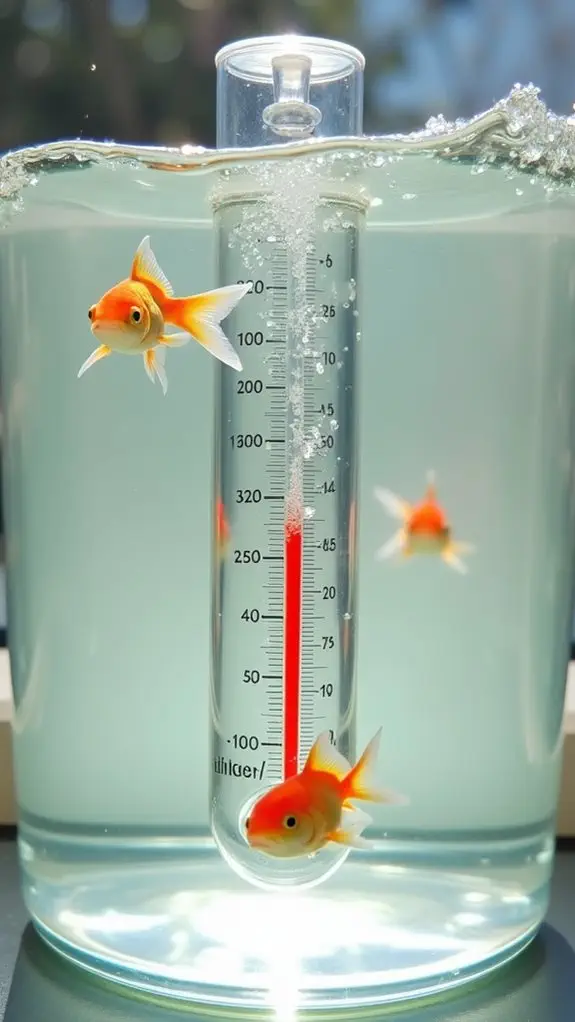
Proper aeration and temperature control in your bucket are two critical factors that'll keep your fish healthy during transport or water changes.
You've got several aeration techniques to choose from, including air lift pumps and venturi aerators, which are both effective ways to keep oxygen flowing. If you're feeling handy, you can make your own air lift pump using PVC pipe, an air pump, and some basic supplies – it's not rocket science!
For temperature management, you'll want to evaluate using aquarium heaters or specialized coolers like the EGO bait coolers. These coolers are fantastic for maintaining consistent temperatures for up to 12 hours, making them perfect for transporting fish.
If you're working with a simple bucket setup, a submersible aquarium heater will do the trick – just make sure it has a built-in temperature controller that you can adjust between 65-90°F. Maintaining optimal water quality is vital for ensuring your fish remain healthy throughout their time in the bucket.
Don't forget about surface agitation! Adding an airstone or bubble wall won't just make your bucket look fancy – it'll help increase oxygen levels and keep your finned friends happy and stress-free during their temporary stay.
Fish Species That Handle Buckets
Now that you've got your bucket's environment dialed in, it's time to contemplate which fish species will thrive in temporary bucket housing. When considering bucket fish compatibility, you'll want to focus on hardy species that can handle some stress while maintaining their health.
Tilapia and catfish are your top contenders for warm-water temporary aquatic environments. They're both tough cookies that adapt well to changing conditions, and they won't throw a fit if things aren't perfect. These fish can handle temperatures between 75-85°F and aren't too picky about their water quality.
If you're in a cooler climate, trout might be your best bet. They're like the winter warriors of bucket fish, preferring temperatures between 45-65°F.
While goldfish might seem like an obvious choice (they're practically the superheroes of surviving less-than-ideal conditions), you'll want to keep them solo since they don't play well with others. Plus, they've got a knack for producing nutrients that could make your bucket water a bit too "exciting" if you're not careful with maintenance.
Emergency Care and Monitoring
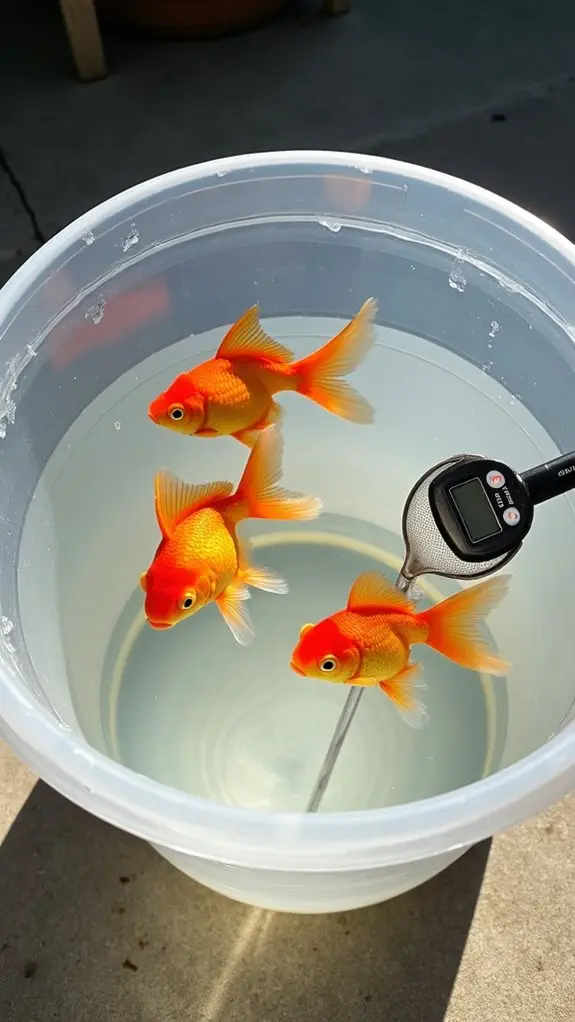
During emergencies, keeping your fish alive in a bucket requires careful monitoring and quick action. You'll need to establish emergency protocols quickly, starting with proper water conditioning and maintaining stable temperatures.
Don't forget to add an air stone or pump to keep oxygen levels up – your finned friends need to breathe too!
Watch your fish's behavior closely for signs of stress, like rapid breathing or unusual swimming patterns. You're fundamentally playing detective here, making sure they're comfortable in their temporary home.
If you notice anything concerning, you'll want to check water parameters right away and make necessary adjustments. Remember, it's better to be a bit paranoid than sorry!
Keep your emergency supplies well-stocked and easily accessible – you don't want to be running around frantically when you need them most. This includes water conditioner, basic medication, and a battery-operated air pump for those unexpected power outages.
If you need to treat your fish while they're in the bucket, be extra careful with medication dosages since you're working with a smaller water volume.
And hey, while they're hanging out in their temporary digs, it's best to cut back on feeding to keep water quality stable.
Transport Safety Guidelines
Safety takes center stage when transporting fish in buckets, requiring careful planning and execution. When you're considering bucket transportation, you'll need to make sure your fish stay healthy and stress-free throughout their journey.
Before you begin, stop feeding your fish 24 hours prior to moving them – this helps reduce waste and keeps the water cleaner during transport.
Here are essential steps for safe fish handling during transport:
- Clean and disinfect your bucket thoroughly, removing any soap residue that could harm your finned friends.
- Fill the bucket with clean, filtered water from their original tank to maintain familiar conditions.
- Use a gentle net to transfer fish, avoiding quick movements that might startle them.
You'll want to secure your bucket properly in your vehicle to prevent tipping or spillage during transport.
Drive smoothly and avoid sudden stops or sharp turns – your fish will appreciate the gentle ride!
Remember to monitor water quality regularly during longer trips, and don't forget to maintain proper oxygen levels. If you're traveling more than a short distance, consider using a battery-operated air pump to keep the water well-oxygenated.
Long Term Bucket Solutions

Maintaining fish in buckets for extended periods requires an all-encompassing approach to water quality and environmental control. For successful long term storage, you'll need to focus on creating a stable environment that keeps your fish healthy and stress-free.
Your bucket maintenance routine should include regular water testing and careful monitoring of ammonia levels. You'll want to use quality water conditioners to minimize the need for frequent water changes, though you can't skip them entirely.
Setting up an efficient aeration system with air stones will keep oxygen levels ideal, while frozen water bottles can help maintain steady temperatures without diluting the water.
Don't forget about the little details that make a big difference! Keep your bucket setup in a quiet spot away from direct sunlight, and you'll prevent unnecessary stress on your fish.
It's also smart to limit feeding during extended storage periods – your fish won't mind a light diet, and it'll help keep the water cleaner. Remember to have a backup plan ready, like spare air pumps or additional conditioners, because fish don't exactly appreciate equipment failures!
Frequently Asked Questions
Can I Use a Plastic Bucket That Previously Contained Cleaning Chemicals?
You shouldn't use buckets that held cleaning chemicals due to dangerous chemical leaching. Even after washing, cleaning residue can remain trapped in the plastic, making it unsafe for any future contents.
Will Adding Aquarium Plants to the Bucket Help Fish Survive Longer?
Yes, adding plants provides significant benefits. You'll get better oxygen levels, natural filtration, and stress reduction for your fish. Just guarantee proper bucket setup with suitable plants and adequate water conditions.
How Many Times Should I Change Bucket Water During a Power Outage?
You'll need to perform bucket water exchanges 1-2 times per day based on your fish's behavior. When they gasp at the surface, it's time to change water to maintain oxygen levels and water quality.
Can I Stack Buckets With Fish During Transport to Save Space?
You shouldn't stack buckets with fish during transport. It's unsafe and increases stress on the fish. Stacked buckets can tip over, leak, or reduce oxygen flow, compromising transport safety for your aquatic pets.
Should I Feed Fish While They're Temporarily Housed in Buckets?
While temporary feeding in buckets is possible, you'll want to minimize it to maintain water quality. If your fish are there for under 24 hours, you don't need to feed during bucket care.
Final Thoughts
You'll find that buckets can work for temporary fish holding, but they're not a long-term solution. Remember to prioritize proper water conditions, aeration, and careful monitoring when you're using a bucket for your finned friends. While it's perfectly fine for short transport or emergency situations, your fish will need a proper aquarium for their permanent home. Keep these guidelines in mind, and you'll help guarantee your fish stay healthy during their bucket adventures.

